Thinking Manual
Thinking Manual
A Digital Framework for Designing and Making
Anna Vasileiou
in Partial Fulfillment of the Requirements for the Degree of Master of Science in Architecture Studies
at the Massachusetts Institute of Technology
May 2020

In the wake of a new form of craftsmanship, architects and designers have adopted a new digital mindset. Design is considered not only a tool of making but also one of thinking, with us transitioning from inventing analog machines as thinking, drawing, and making tools to designing and fabricating with computer-controlled machines.
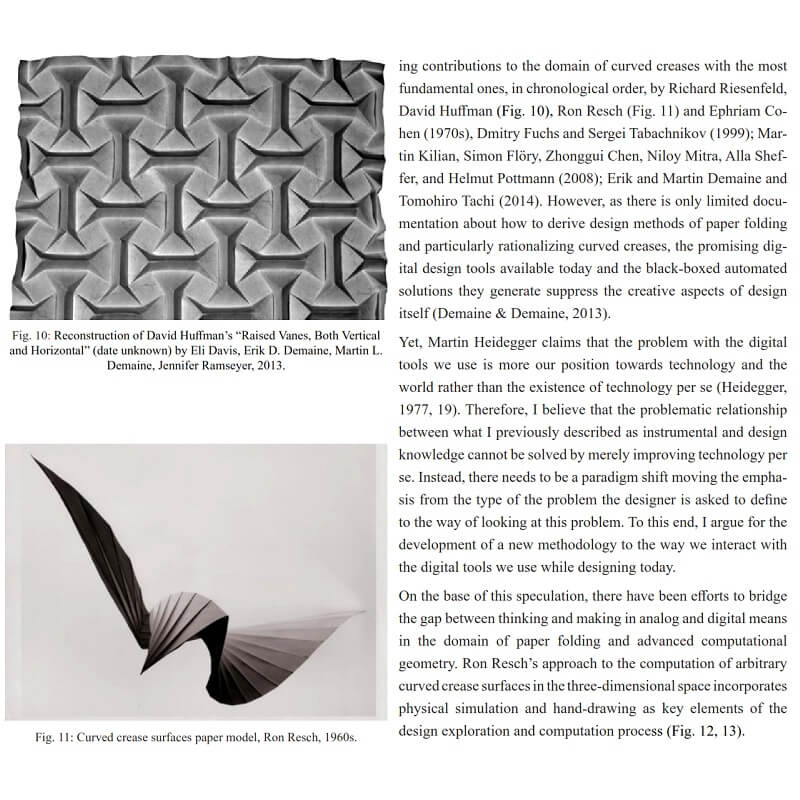 Yet, although these digital technologies are conceived as tools augmenting certain aptitudes, they fail to communicate the creative and inventive aspects of the act of design. Architects and designers have embraced this new digital mindset, and use more and more computation-based software to solve even more challenging geometric problems and reach higher degrees of accuracy and efficiency in design and fabrication.
Yet, although these digital technologies are conceived as tools augmenting certain aptitudes, they fail to communicate the creative and inventive aspects of the act of design. Architects and designers have embraced this new digital mindset, and use more and more computation-based software to solve even more challenging geometric problems and reach higher degrees of accuracy and efficiency in design and fabrication.
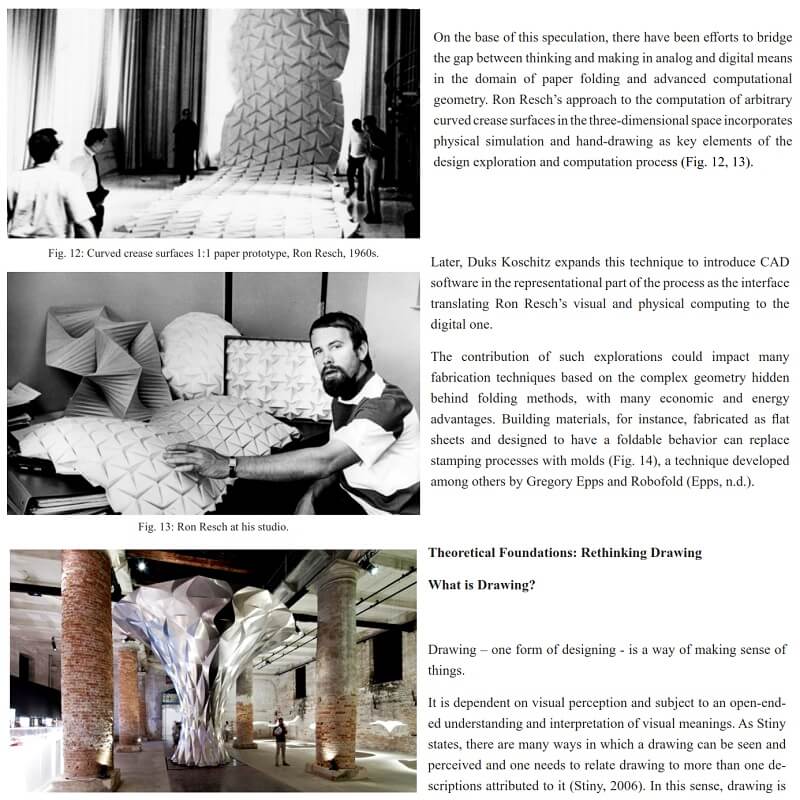 However, computers’ binary structural and representational logic focusing mainly on the symbolic and computational design aspects is neither similar nor fully understandable to our way of thinking. Hence, this very lack of understanding of the tools’ operational logic repositions our creative role from making by thinking to making by calculating.
However, computers’ binary structural and representational logic focusing mainly on the symbolic and computational design aspects is neither similar nor fully understandable to our way of thinking. Hence, this very lack of understanding of the tools’ operational logic repositions our creative role from making by thinking to making by calculating.
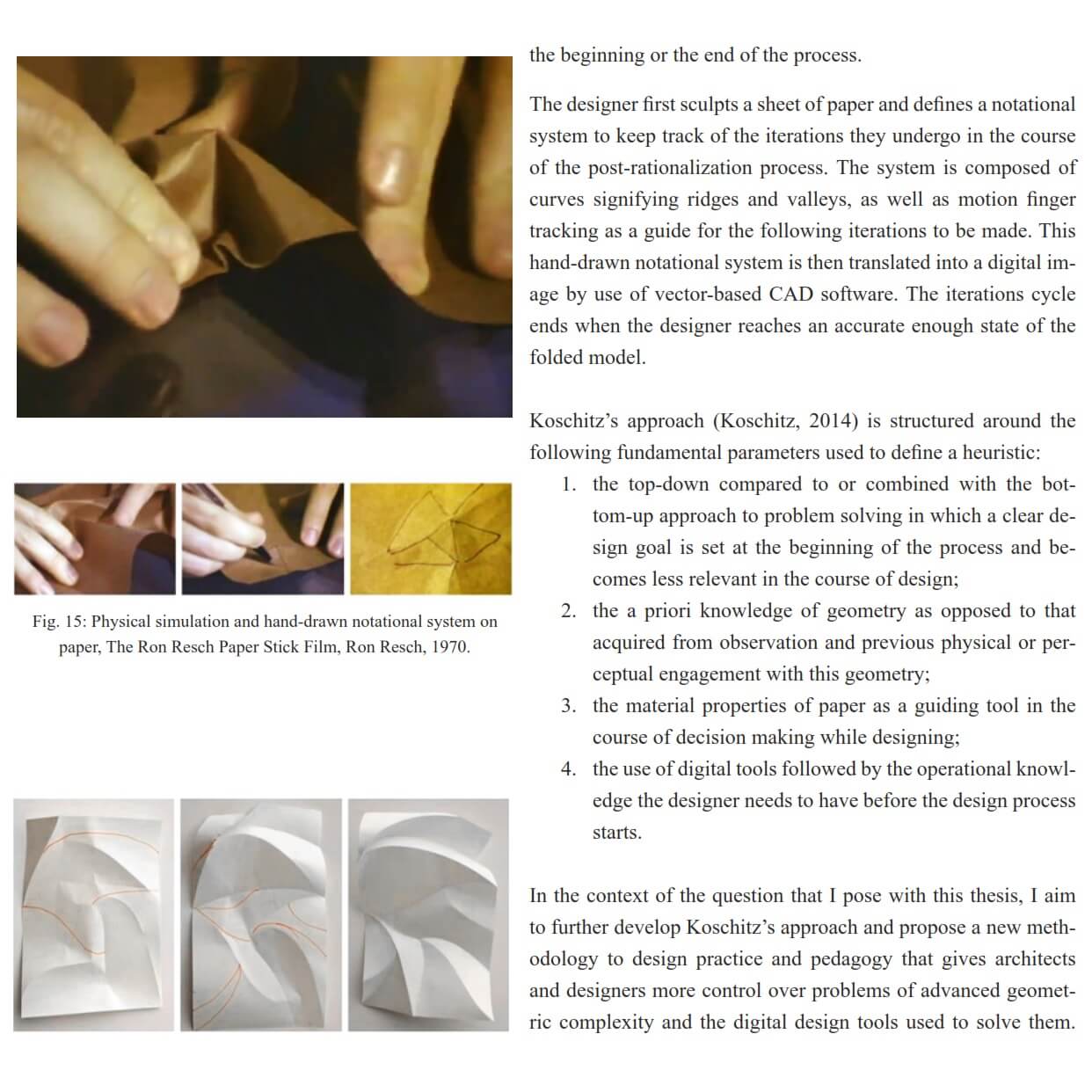 Yet, can the computer as a digital tool augment the human mind and render design a pedagogical act of creative thinking? In the course of this thesis, author aims to explore ways of introducing computational tools into design processes of advanced geometry for a more creative and open-ended human-machine symbiosis.
Yet, can the computer as a digital tool augment the human mind and render design a pedagogical act of creative thinking? In the course of this thesis, author aims to explore ways of introducing computational tools into design processes of advanced geometry for a more creative and open-ended human-machine symbiosis.
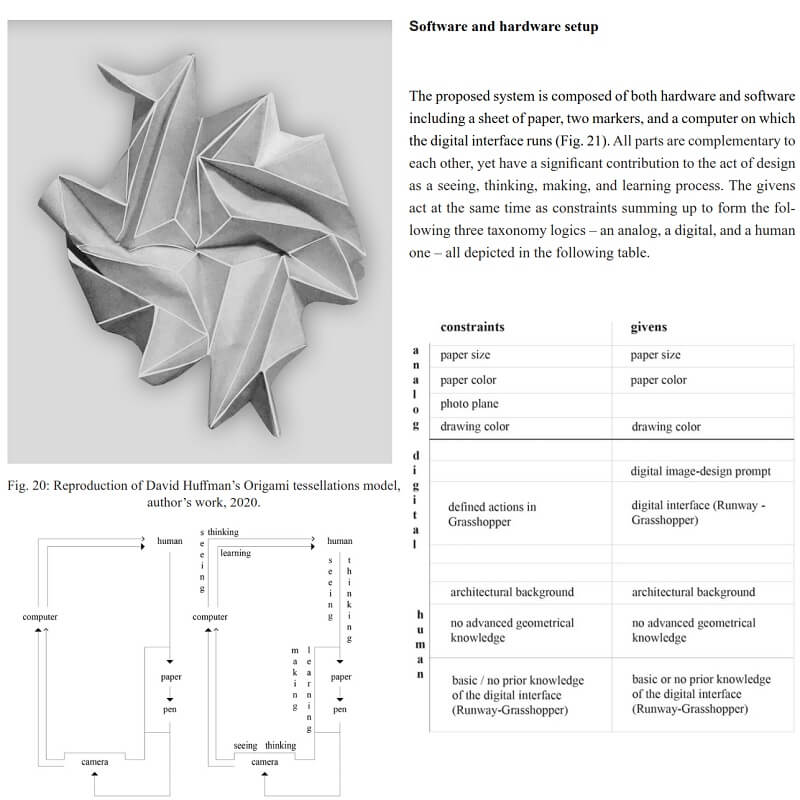 To this end, she proposes the Thinking Manual, a hypothesis in the form of a new design workflow enhancing and reconciling the designer’s creative thinking with the computer’s image processing and simulation capabilities.
To this end, she proposes the Thinking Manual, a hypothesis in the form of a new design workflow enhancing and reconciling the designer’s creative thinking with the computer’s image processing and simulation capabilities.
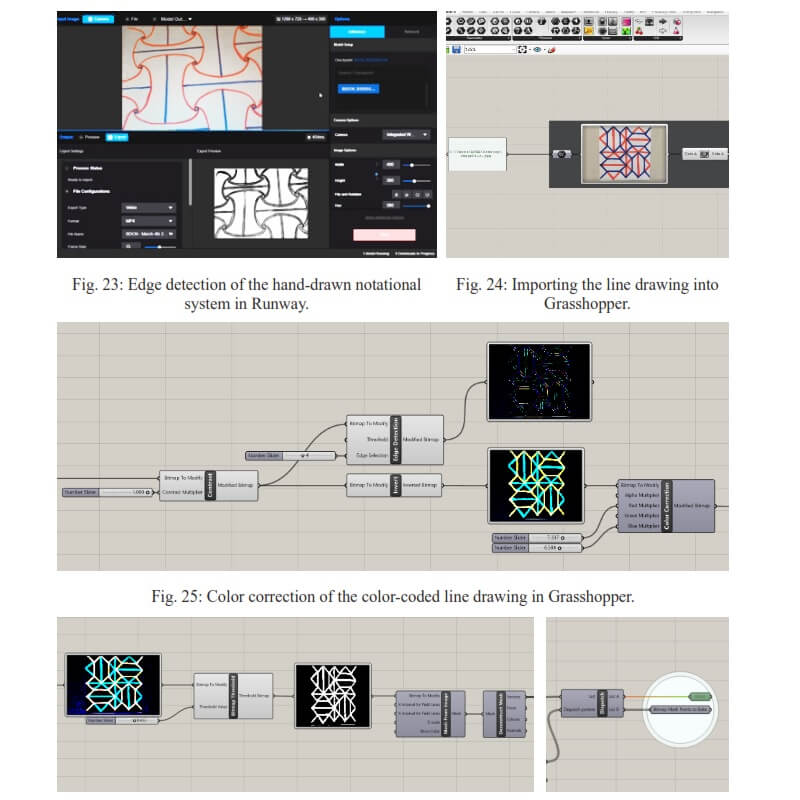 She uses the problem of paper folding to question her initial hypothesis, test her proposal, and prove the necessity for a paradigm shift in design practice and pedagogy. Herein, design stands as the interface between unconscious and conscious thinking, doing, and making, driven by the triptych eye-mind-hand with or without geometric precision.
She uses the problem of paper folding to question her initial hypothesis, test her proposal, and prove the necessity for a paradigm shift in design practice and pedagogy. Herein, design stands as the interface between unconscious and conscious thinking, doing, and making, driven by the triptych eye-mind-hand with or without geometric precision.
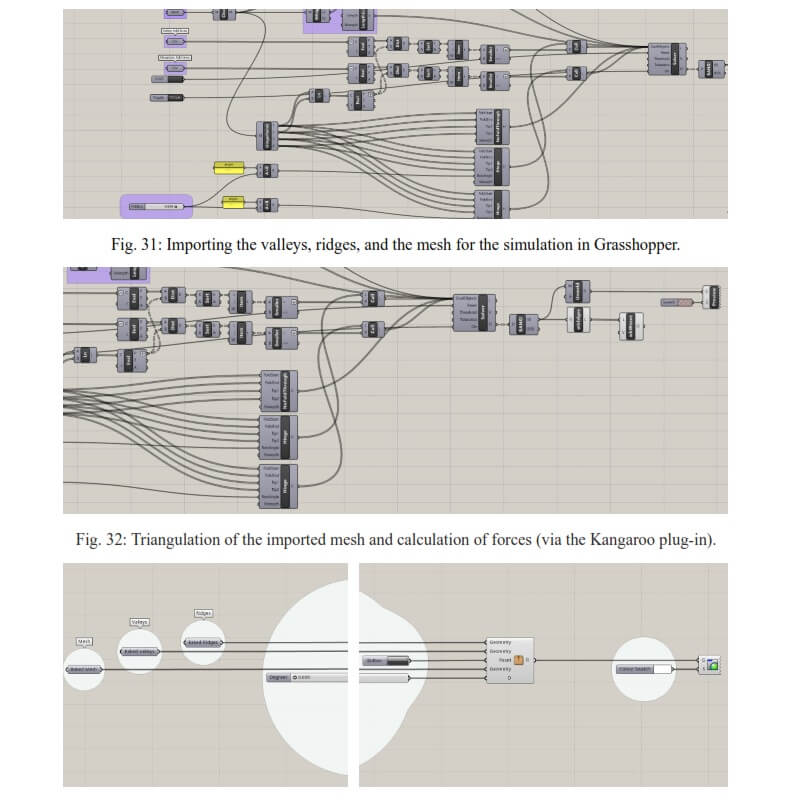
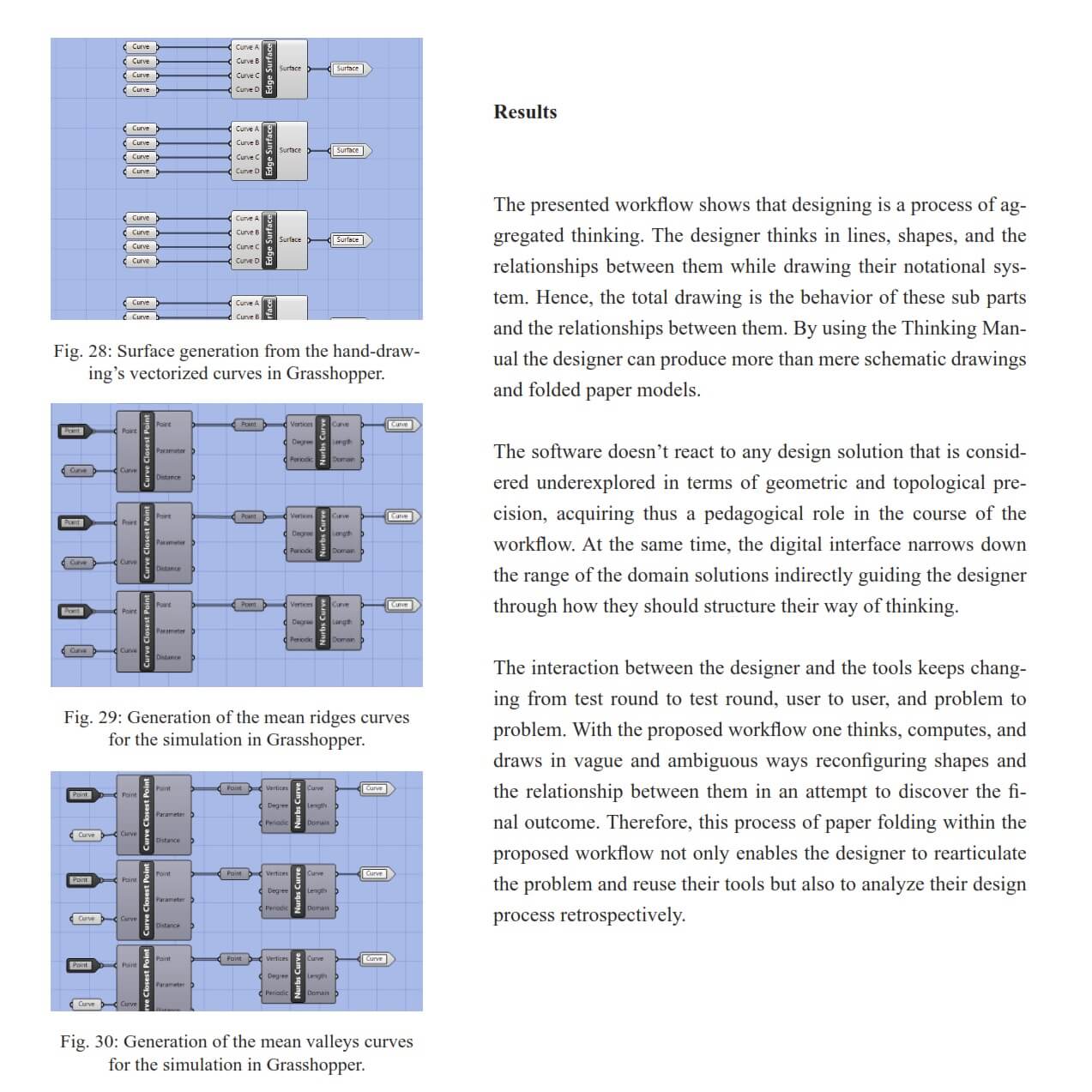
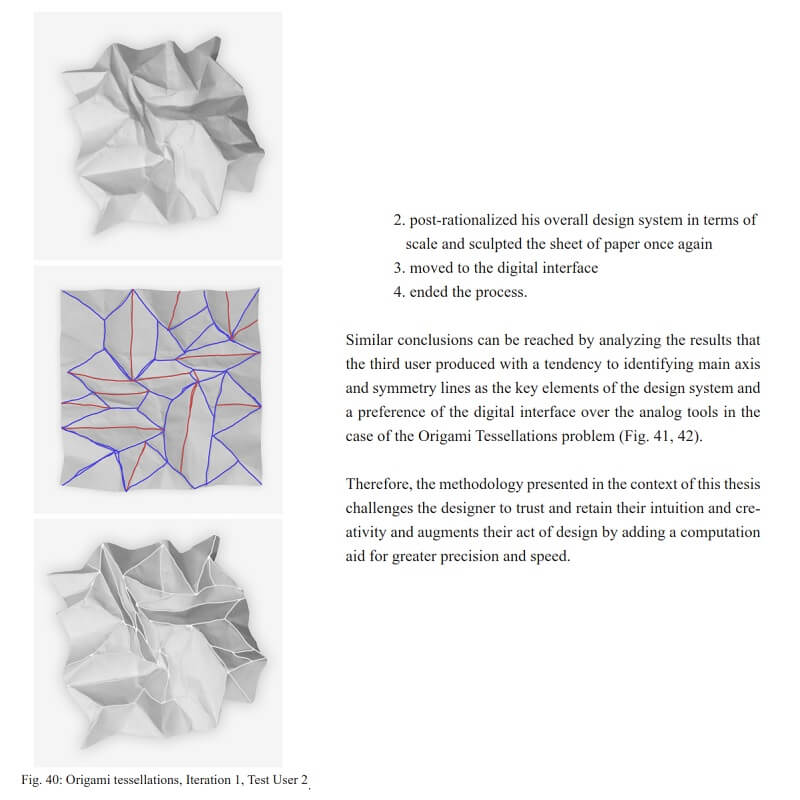




























Comments